These days, finding potential employers is as easy as finding the hottest new brunch destinations. Given this reality, employers must take a proactive approach to attracting and attracting top talent. A well-crafted employer branding strategy can help any company influence the perceptions of job seekers and employees, but getting started requires a little context.
Definition
Employer branding is the process of managing and influencing your reputation as an employer among job seekers, employees and key stakeholders. It includes everything you do to position your company as an employer of choice.
Your employer brand is your company’s reputation as an employer. In simpler terms, it’s what job seekers and employees really think of you. It’s what they tell their friends and family when you’re not around. Even if it’s intangible, your employer brand is a value that must be constantly nurtured.
This is where employer branding comes into play.
Why “manage” and “influence” instead of “own” or “dictate”? Because your employer brand is not something you actually own. Your reputation as an employer exists in the minds of applicants and employees, and it is shaped by their thoughts and impressions. You have an employer brand, whether you actively manage it or not. Applicants and employees have opinions about you, and if you don’t work to influence them, you’ll be at their mercy.
Think of the totality of your organization’s recruitment and retention efforts as a series of individual interactions. Every touch point leaves an impression on applicants and employees that shapes your employer brand and your ability to hire and retain good employees. Without proper management, any of these touch points can become a deal breaker and cost you candidates and employees.
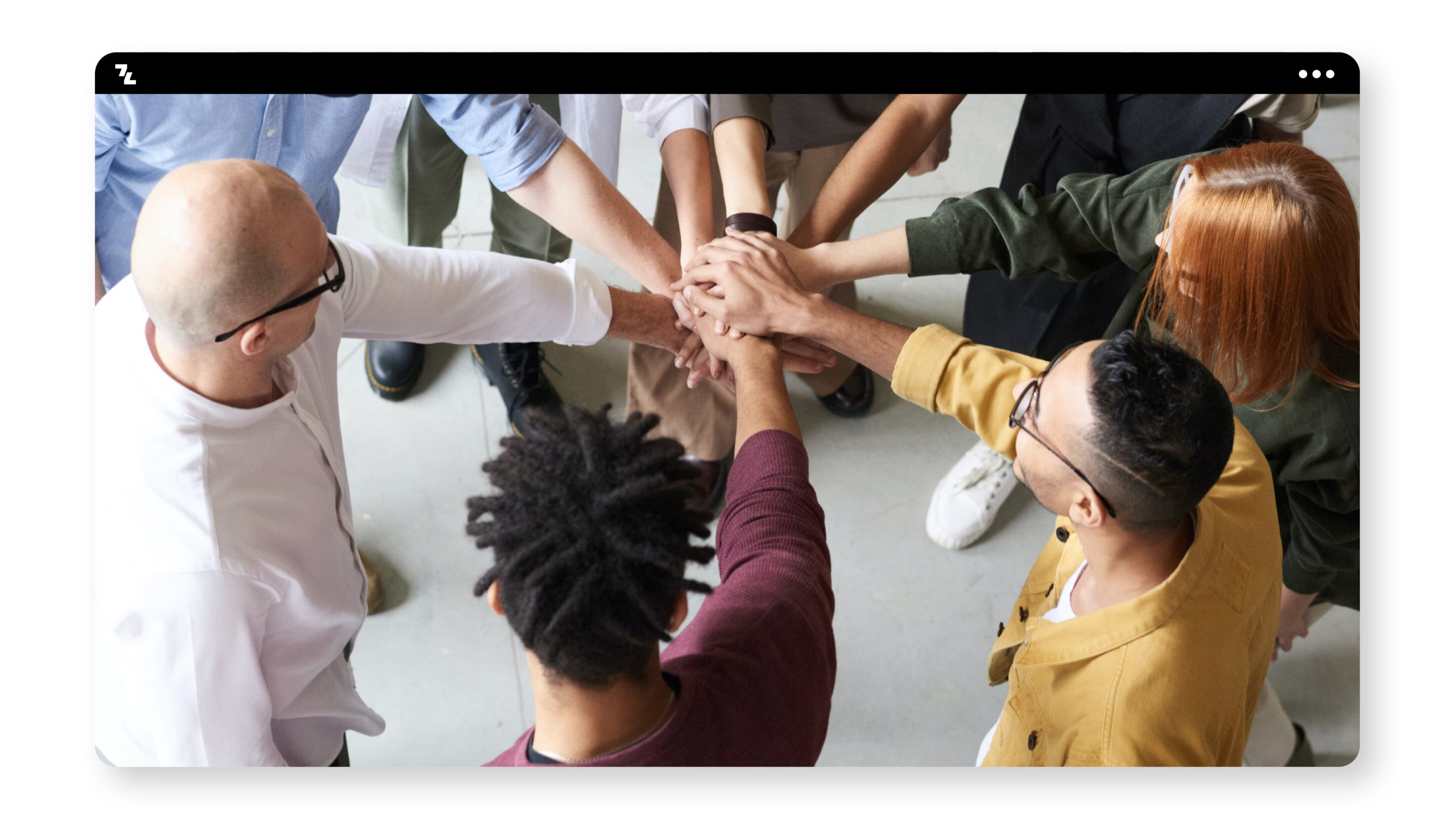
Advantages
The importance of employer branding cannot be overstated.
Although this concept has been around for decades, it didn’t gain much attention until the mid-1990s, when the first online job boards were launched. Almost overnight, workers had access to millions of job openings across the country. The workforce became more agile than ever before, and the days of being able to commit to a company for the long term were over.
Smart employers adapted to this change (some faster than others) and began taking proactive steps to attract and retain top talent, but thousands of companies are still failing to take advantage of employer branding.
And these advantages are significant.
Let’s look at some statistics – good, bad and ugly – that shed some light on why employer branding is so important.
- 95% of applicants say that a company’s reputation plays an important role in their search for new career opportunities (source). Virtually every candidate out there – active, passive, or somewhere in between – will consider your company’s reputation before applying.
- 66% of job seekers want to learn about your culture and values (source). Applicants literally tell us what they want to see in their job search. Your employer branding efforts can be a great way to communicate these qualities.
- 69% of candidates would turn down an offer from a company with a poor employer brand, even if they were unemployed (source). Even fear of unemployment is not enough to overcome a negative employer brand.
- Companies with a poor employer brand must offer at least a 10% salary increase to attract top talent (source). Imagine if you had to pay a 10% surcharge for each individual setting. Take a minute to reflect on the state of your employer brand and ask yourself if you’re already paying that premium without realizing it?
- 40% of passive candidates would accept a new job without a salary increase if the company had a good employer brand (source). A positive employer brand is all it takes to overcome the stigma associated with lateral entry for nearly half of the workforce.
- As many as 23% of 18- to 34-year-old employees would take a pay cut to move to a company with a good employer brand (source). While we would never recommend intentionally undercutting the competition, it shows the power of reputation.
- Only 49% of employees would recommend their employer to a friend (source). This is especially scary because employee referrals are often the best source of quality candidates. If less than half of your employees would recommend you to their network, you can say goodbye to those attitudes.
More than anything, these statistics prove that employer branding impacts every facet of the employer-employee relationship. While it is most commonly associated with recruitment, employer branding also impacts employee engagement, retention and even profitability.
Strategy
With an employer branding strategy, you can manage and positively change the dialogue that surrounds your company to ensure higher talent acquisition and retention. Basically, employer branding is how you market your company to job seekers and what employees say about your company as a place to work.
A good employer branding strategy can help you attract better talent, lower hiring costs and reduce employee turnover.
1. Know your company’s unique value proposition.
To create a strong employer brand, it is critical that you first focus on your company’s mission statement, values, vision and culture. It might be helpful to identify your organization’s needs and then work backwards to understand what type of talent you need to acquire to meet those goals.
For example, consider Teach for America’s mission statement, “One day, all children in this nation will have the opportunity to receive an excellent education.”
With this statement as a guiding principle, Teach for America can then tell a compelling employer story on their values page. Among other things, they promise their employees the opportunity for continuous learning: “We work with curiosity and embrace new ideas in order to innovate and constantly improve. We consciously take risks and learn from successes, setbacks and each other.”
In this way, they have aligned their values and employer brand with their business objective.
2. conduct an employer brand audit.
You may not be fully aware of the reputation your company has with job seekers or even your own employees. Send out internal surveys, conduct social media research, visit sites like Glassdoor to read reviews, or hire a reputation monitoring firm.
Ultimately, your research should uncover your employees’ favorite aspects of your company culture to focus on, as well as any areas for improvement to ensure a strong employer brand.
3. write a value proposition for the employer.
After researching and creating a list of values and benefits your company offers, you should formulate an employer value proposition. A value proposition is a marketing message and a promise, so you shouldn’t say anything that isn’t true or that your employees wouldn’t agree with. You can use your employer value proposition on your website, in your hiring materials, or on your LinkedIn company page.
In addition, your value proposition is something your recruiters and HR team can discuss with potential candidates.
Your value proposition as an employer should have nothing to do with compensation. Instead, you want to inspire passion in potential candidates by expressing your company’s positive impact on the world or its deeper purpose. People want to feel like their work is meaningful, often even at the expense of a bigger paycheck.
Accenture, a global management consulting and professional services firm, for example, has developed this value proposition for employers, which they have placed prominently on their careers page: “Help shape the future. Be yourself, make a difference. Work where you are inspired to discover your passions, where your talents are nurtured and cultivated. Innovate with cutting-edge technologies on some of the coolest projects you can imagine. And get the tools you need to keep learning and growing so you can stay ahead of the curve while making a difference in the world.”
4. take advantage of current employees.
When job seekers want to learn more about your employer brand, they will want to hear from and see real employees of your company. Leverage your employees by conducting employee interviews or testimonials and posting them on your website.
You can also ask your employees to post on their social media accounts when your company hosts a fun giveaway or company outing. For example, maybe you host a Women in Tech event and hold a panel discussion. After that, you could simply ask your employees to post a picture on Instagram or Facebook with a hashtag you created. This is a fun yet effective way for your own employees to share your company’s culture with their own networks.
5. Cultivate a strong onboarding process.
Onboarding is the first experience a new employee has, and a negative impression can have big consequences. In fact, employees who have had a negative onboarding experience are twice as likely to seek another opportunity.
Ultimately, conveying a positive brand image starts with a good onboarding process. It’s critical to get your employees excited about their jobs and their teams from the start. By equipping your new hires with the instruction and tools they need to excel in their roles, you’ll ensure a smooth transition, lower turnover rates and more productive teams.
6. Provide learning and development opportunities.
In 2018, the most common reason people left their jobs was that they were bored and needed a new challenge. Ultimately, this should be a relatively simple solution.
When you give your employees the opportunity to continue their education and learn new skills, you show that your company values continuous learning and improvement. And by challenging your employees, you ensure they don’t get bored in their roles – which can lead to higher retention rates.
And as they develop new skills, they become more valuable employees for your company. A win-win situation.
7. Use videos, blog posts, photos and slideshows to tell your business story.
When you implement a strategy to improve market perception of your product or service, don’t just communicate your message through one channel. Instead, provide videos, photos, slideshows, blogs, and other forms of messaging to ensure you reach the largest audience on whatever platform they want to be found on.
Likewise, it’s important to use high-quality video, photos, and text to tell your business story. For example, you could post employee interviews on your Jobs page or a Slideshare created by your CEO on your About Us page.
8. create a strong diversity and inclusion initiative.
If you want to create a strong employer brand, it’s critical that you show your commitment to building diverse teams. Investing in D&I initiatives has many benefits for the company, such as more innovative ideas, a stronger workplace culture, and better customer service. However, it’s also necessary to cultivate a positive employer brand by making sure you extend your brand’s reach to new groups of people.
Examples
Mollie
Mollie is a Dutch scale-up and one of the fastest growing payment processors in Europe.
Mollie’s “About” page nicely describes what the company is all about, including its core values:
We are Mollie.
We were founded with the belief that everyone has the right to grow.
Therefore, we sincerely seek the best for our customers and our employees.
We encourage our employees to take intelligent risks and accept possible failure.
This enables us to develop first-class products that simplify complex financial services.
Our commitment to growth enables us to drive the payments industry forward.
And it allows companies of all sizes to compete on better terms.
For us, growth is rooted in the realization that small things can make a big difference.
It is rooted in our products, embedded in our culture, and it empowers us to look critically at the status quo.
Because payments should be effortless. And growth should be possible for everyone. Be loved. Be brave. Be authentic. We are Mollie. We are the founders of growth.
As a candidate, you immediately understand what this company stands for and what you can expect if you want to work for them. A visit to Mollie’s careers page gives you an even better idea. Starting with “Be authentic.” in big, bold letters, the message couldn’t be clearer.
Mollie also does well on social media from an employer brand perspective. For example, the company’s LinkedIn page features freshly hired mollies, employee stories and experiences, and posts about the hiring process.
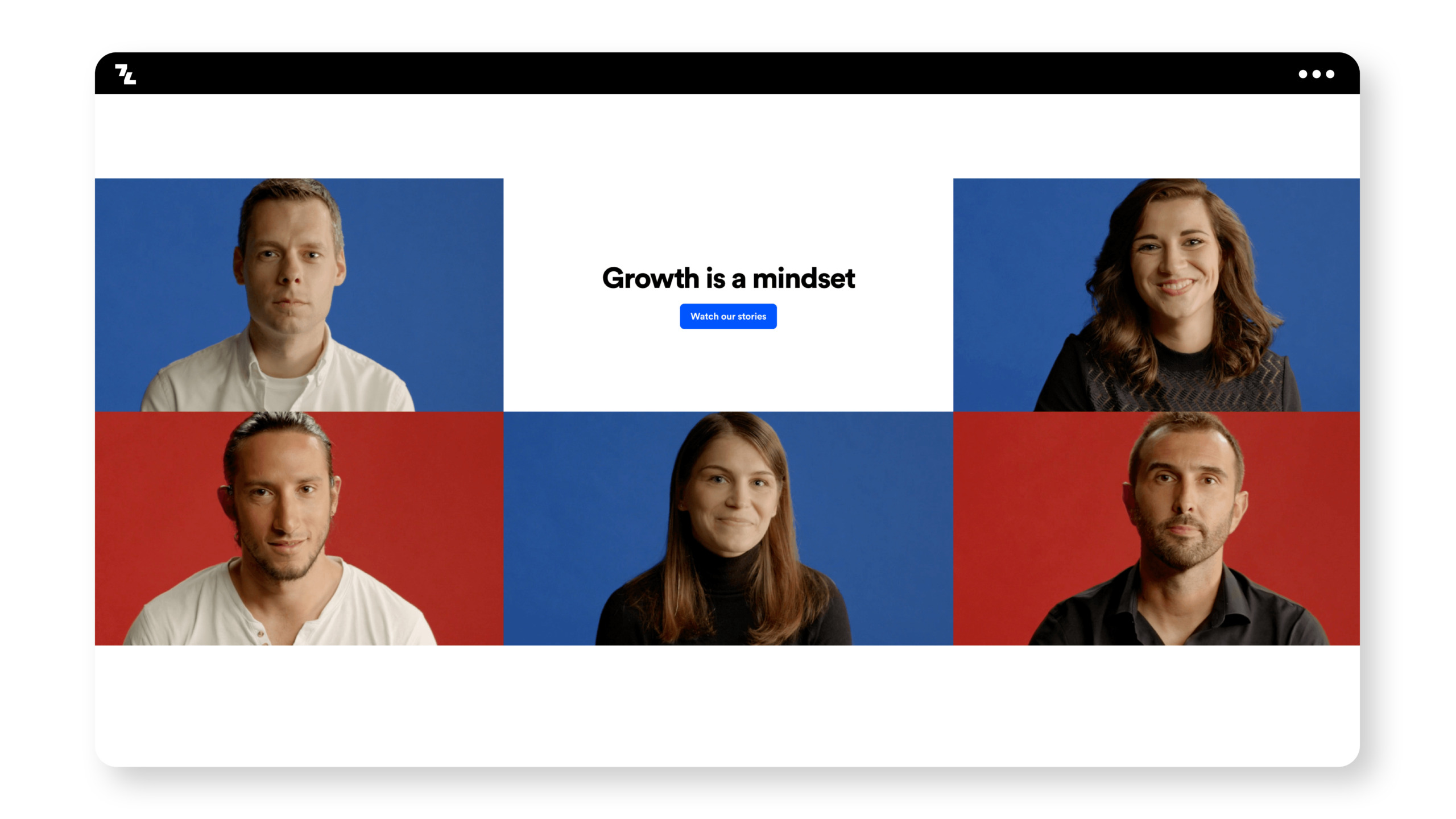
Eventbrite
Eventbrite is a global self-service ticketing platform for live experiences that allows anyone to create, share, find and attend events.
Eventbrite does a great job of showing employees that it listens to them, and showing candidates that it is a company at the forefront of the latest developments in the world of work. How so, you ask?
The company’s employees, also known as Britelings, expressed a desire for more flexibility, optionality and personal responsibility. Eventbrite responded by evolving its workplace philosophy; when offices reopen, it will give employees three options to choose from:
- Work 4-5 days per week in an Eventbrite Hub office.
- A mix of virtual work and in-office work, being in the office between 1 and 3 days per week.
- Complete remote work.
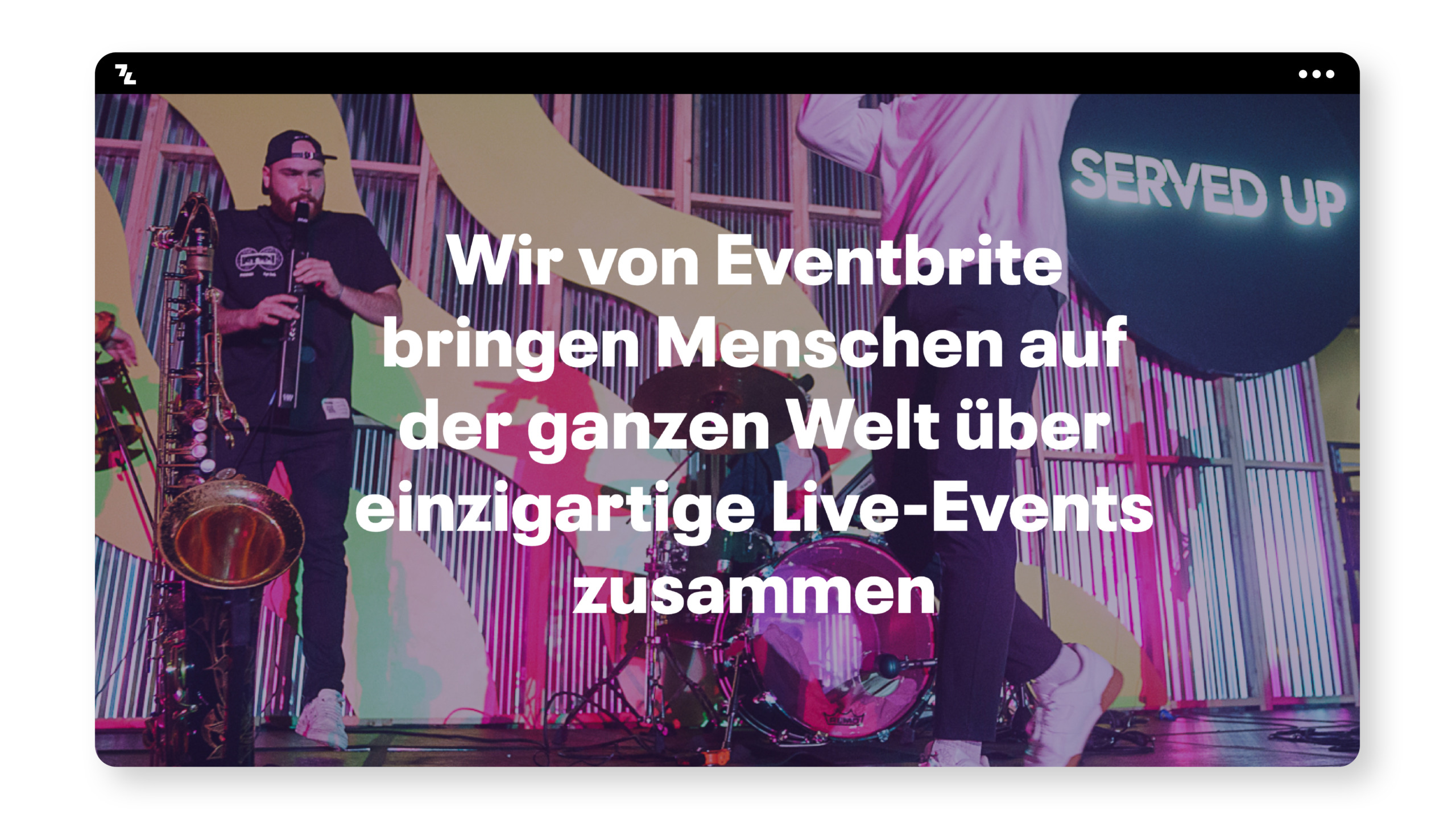
Innocent
Innocent is a company originally founded in the UK that makes smoothies and juices.
Innocent’s five values are: natural, entrepreneurial, responsible, commercial and generous. As they put it themselves, “These five values reflect what we are, how we do things, and where we want to go. Followed by a dose of typical British humor: “They hang over every toilet in the building, so we can see them every day.
On both its Facebook and Instagram pages, Innocent shows how the company lives these values. A good example is their knitting initiative; people knit a little hat, Innocent sells it on a smoothie and the money goes to Age UK. The company also donates at least 10% of its profits to charity each year.
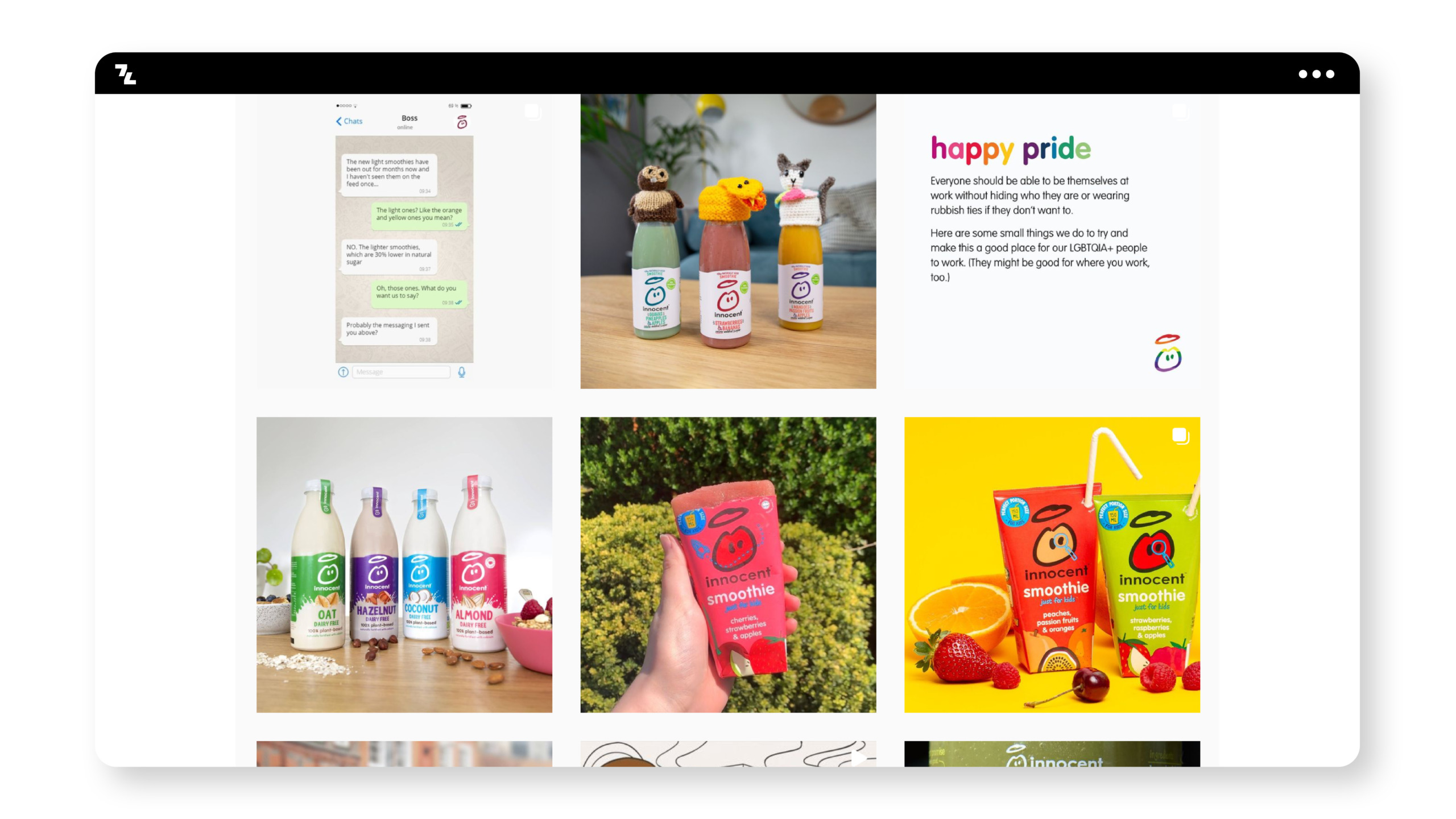
The company’s LinkedIn page focuses more on what Innocent does for its employees. It includes articles about the company’s diversity and inclusion efforts, its L&D offerings, employee testimonials, how it operates and more.
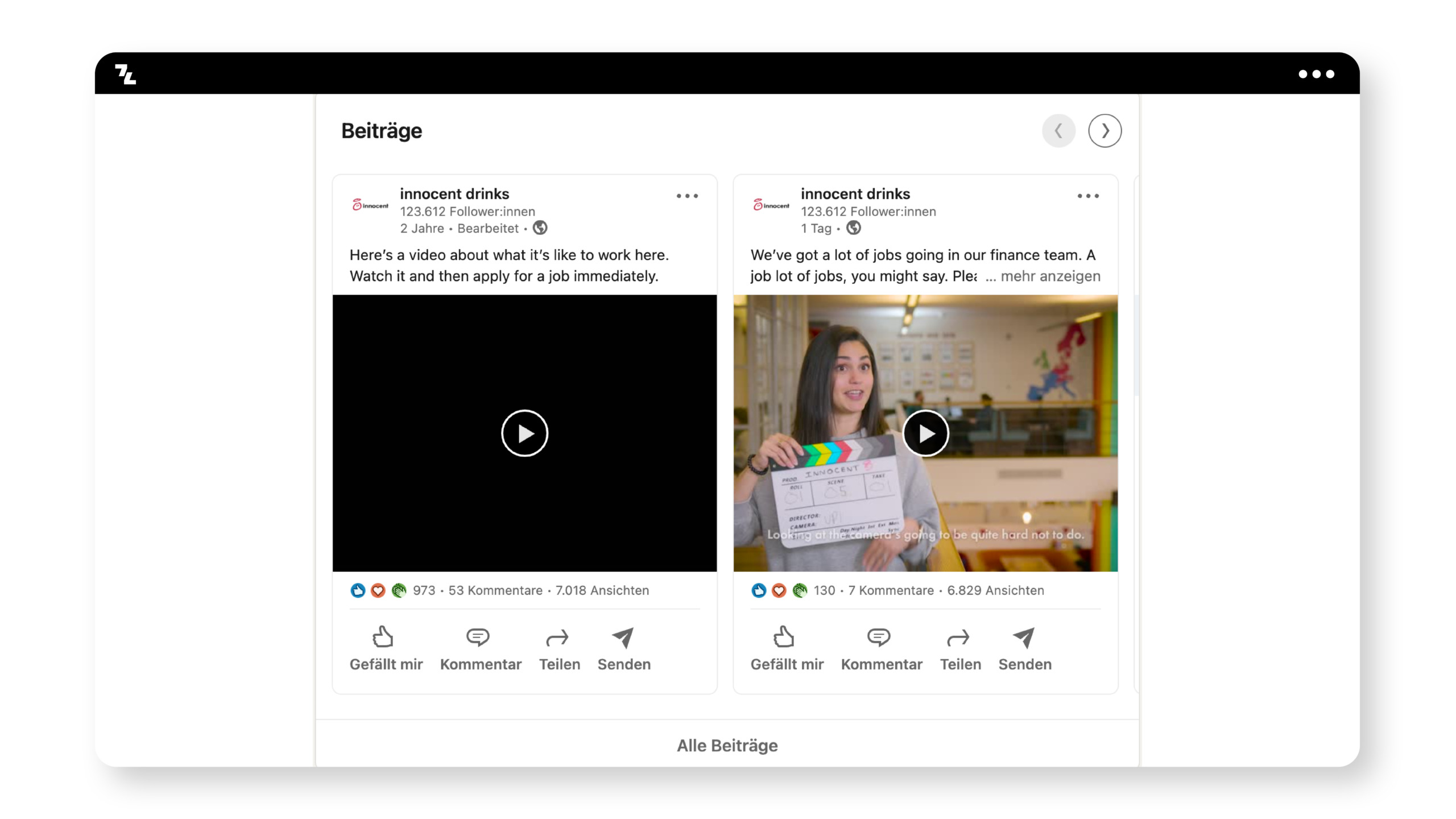
What we like about Innocent’s overall communication is that it’s laced with humor, making it very engaging and fun – and one of our favorite examples of employer branding.





